Every trader first and foremost tracks price development, buying power and market trend. As a rule, a trend is a phenomenon of short duration. More often the price goes in a flat or sideways, you can call these pro-trends in different ways.
If you look at the yearly picture of bitcoin, which sets the rate for all other coins, all bitcoin does during that time is go down. But if you study the whole history since its inception, it’s going up. It’s all about timeframes and cycles!
Trading requires the presence of all parties: sellers and buyers. And the golden rule for effective trading is to buy on fear and sell on euphoria. Often there is a situation when scalpers are pushing the price to break a level and they are met by a limit participant who takes a position against the trend. Its algorithms can be set up for higher volatility, and a grid of orders is spread out to hold the average price.
Trading against the trend
A counter-trend trading strategy involves finding the point at which a reversal begins, which can be a break in structure, changes in volume, or a graphic pattern. Traders either take a position in parts or close it with a short stop and look for a new entry point. Obviously, trading against the trend can be very rewarding, but it requires a number of psychological skills and a certain dexterity, but for a beginner, the trend is a good friend.
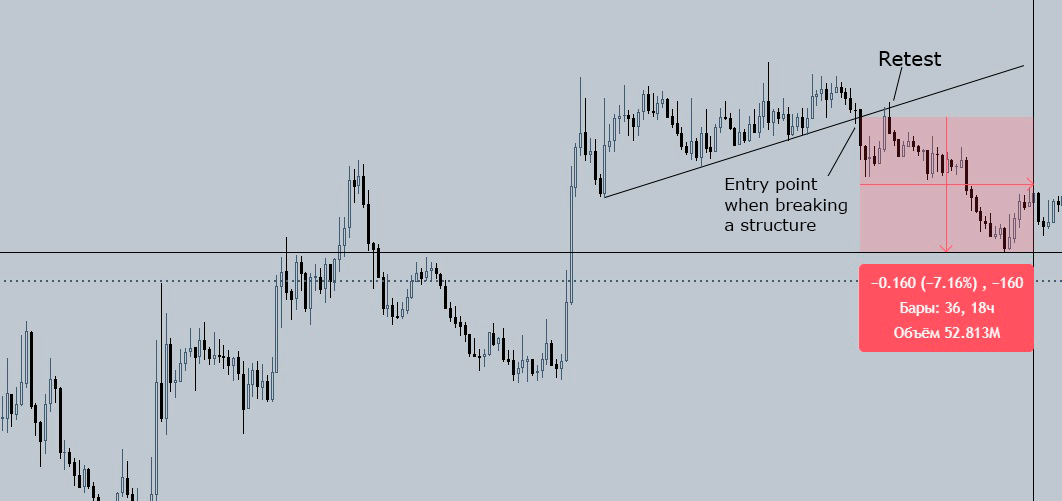
We can see on the chart that the instrument after a clear uptrend entered a local pro-trend and formed a sloping line, which we are guided by before making a trading decision. To open the deal more local factors are taken into account, which can be a pullback to the sloping line, the activity of the participants and the decline in volumes.
For the situation it is preferable to use a small overlap for a tighter set and aggressive settings, which by default can be selected in the Veles bot filters. Indicator RSI (Relative Strength Index) will start to gain a position, focusing on the increased volatility, there is also an opportunity to set numerical values, if the formation is readable for you.

After a breakout of the chart form, the price returns to it – this is called a retest. At this point, the interest in trading increases, as some participants close positions in the longs, and others get to the shorts, after which the price continues downward movement of more than 7%. Thus, on the global picture there was a correction of the uptrend, and those who traded against the trend earned.
If you correctly calculate the movement potential and run the bot with the right parameters, it will gain a position at the overbought moment. Thus you will have a wide window for further actions, and the stop loss will be minimal.
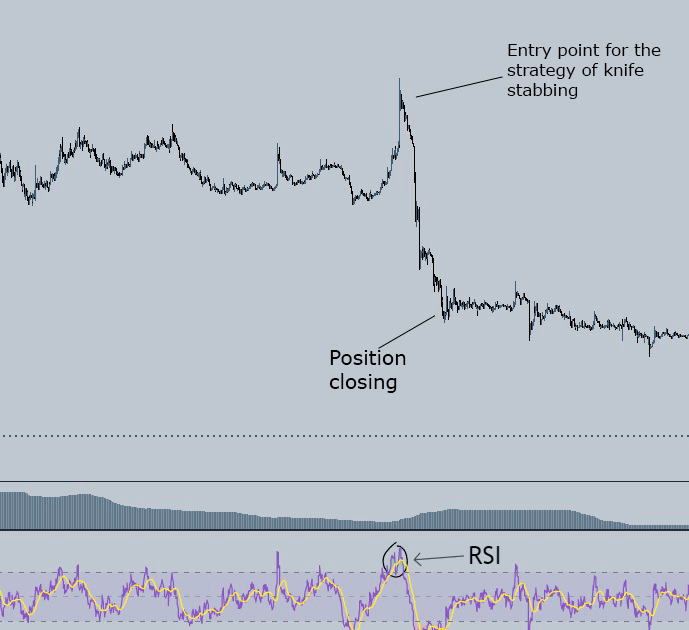
Let’s analyze the trade of the bot Veles, which worked on the indicators RSI and CCI. The trader chose the most dangerous trading strategy “knife stabbing”, and the algorithms coped with this task almost perfectly (the results are shown below). The essence of the strategy is to open a position with a single order against the impulse movement, counting on the instantaneous reverse reaction.
The RSI indicator was set to 75 on the 5m timeframe and the CCI filter was set to 85 pips on the 1H timeframe.

The idea was to catch the final squeeze after the ARPA token pump and wait for the correction, which did not keep me waiting. For such trading it is important not only to understand the technical analysis and to use the indicators correctly, but also to consider the mood of the crowd.

Trade on the continuation of the trend
Trading by trend is a conservative method of trading, its essence is to find local entry points for continuation of movement. If you refer to theory, it is recommended to start your trading way using this trading method.
The price of the falling instrument, after a long sideways trend, started trading near local lows. Buyers show weakness and do not intend to push the price up. Bollinger Bands indicator, which will open a position at the moment of crossing the upper boundary, will help determine the point to enter the trade.
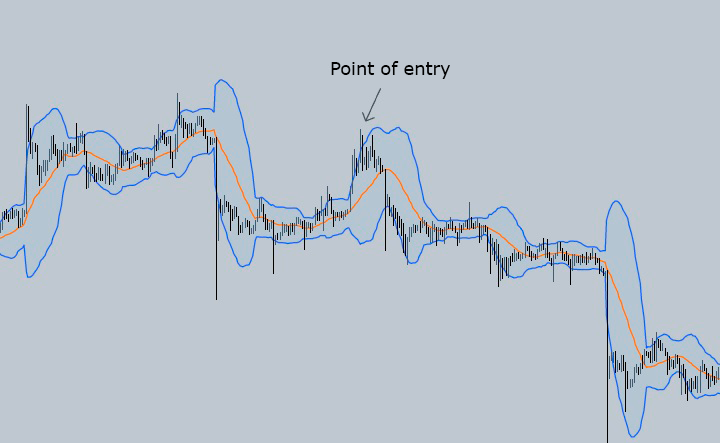
The deal can be worked both conservatively and aggressively. If the first factors for the continuation of the downward movement appear, we set up the bot with a wide grid, in the case of a pullback, Veles will average the position. Aggressive settings with a smaller interval will do for experienced traders.

Below are some examples of how Veles with the “Bollinger Bands” indicator works in this situation.
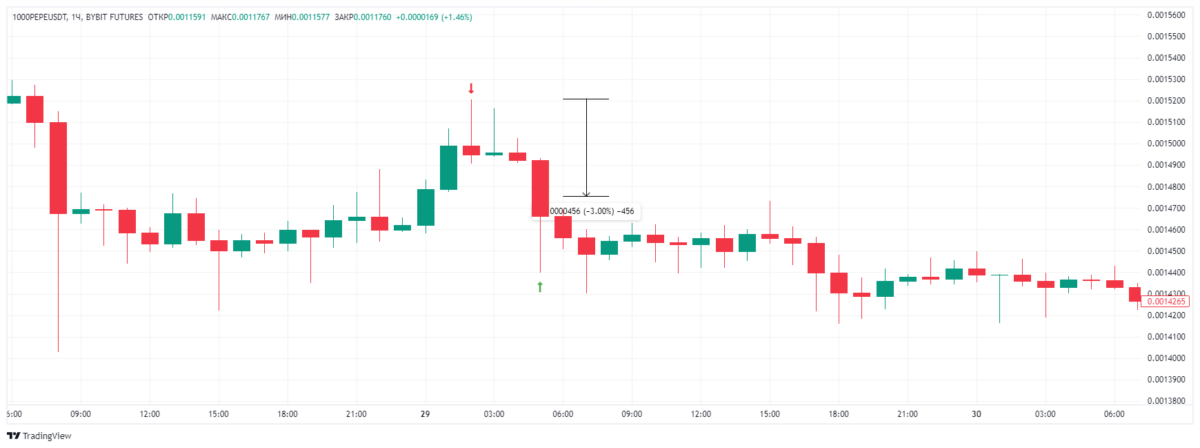
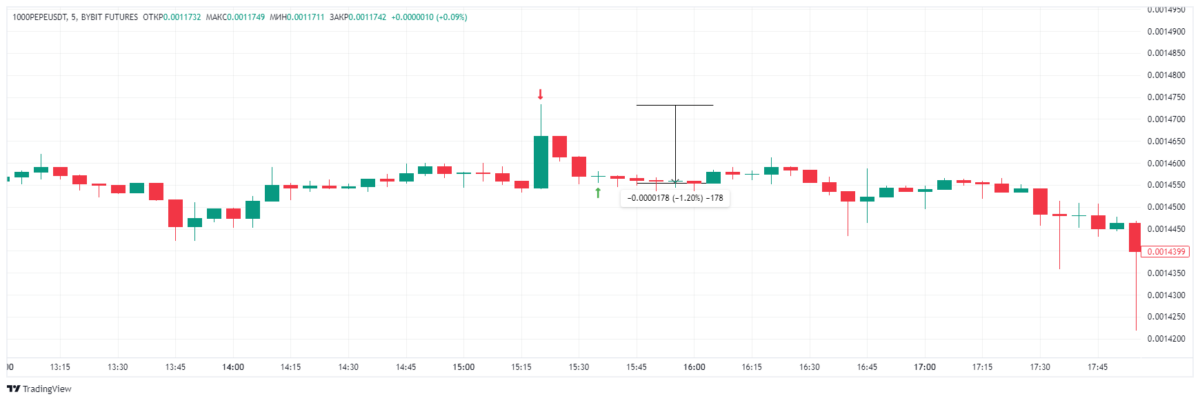
We have before us a situation that is suitable for running Veles algorithms tuned to the “Keltner channel” indicator.

The instrument is moving in a clear trend, where a large limit participant with volumes is pushing the price up. After a strong momentum and subsequent consolidation, the price breaks off and gives a signal to the bot Veles – buy. In this case, the trade can be held until the highs are updated and allow the algorithms to gain a position.

Most traders agree that trading by trend is safer and offers a number of advantages. Basically, it brings less risk as the asset moves in one direction. A counter-trend, on the other hand, rewards traders more, but also carries higher risks. Nevertheless, you should not deny yourself the practice, not forgetting about risk management. We are sure that you will master both trading methods with the help of the Veles algorithms.




